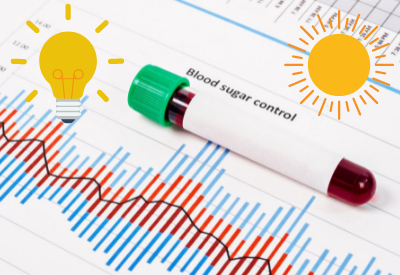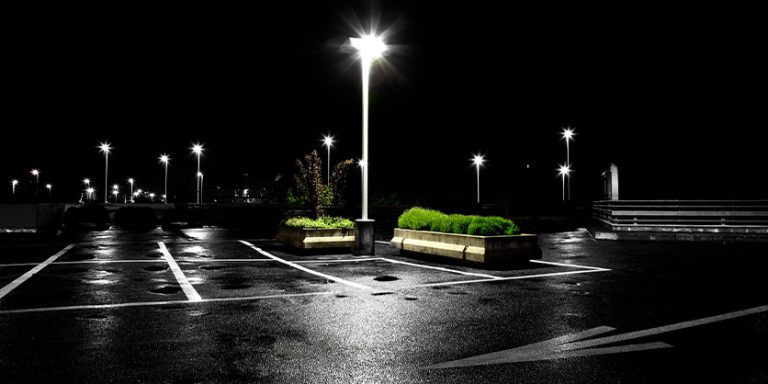Bright Indoor Lighting in Daytime May Lower Glucose Levels

 February 5, 2022
February 5, 2022
Add help for diabetics to the growing list of benefits being attributed to enhancing one’s circadian rhythms by using lighting.
According to study results published in Diabetologia, the journal of the European Association for the Study of Diabetes, optimizing indoor lighting to be brighter during daytime hours and dimmer in the evening may provide cardiometabolic benefits.
The medical journal Healio shared findings from a randomized controlled trial that reported participants who were in an indoor environment with bright lighting during the day and dim lighting in the evening had lower plasma glucose levels and increased energy expenditure compared with bright lighting in the evening and dim lighting during the day. The conclusion reached points to evidence that indoor lighting should correspond to the natural day-night cycle to be most beneficial to our well-being.
“Insulin-resistant, pre-diabetic people have disturbances in their 24-hour energy and substrate metabolism and circadian clock, which may contribute to the development of diabetes,” Patrick Schrauwen, PhD, professor of metabolic aspects of type 2 diabetes in the NUTRIM School of Nutrition and Translational Research at Maastricht University in the Netherlands, told Healio. “These may be due to – among other factors – suboptimal light conditions, as many people spent most of their times indoors. Optimizing the light condition may be able to reset some of these metabolic disturbances.”
How Results Were Measured
Schrauwen and colleagues conducted a randomized controlled crossover trial with 14 overweight adults between the ages of 40 and 75 who met one of four criteria for insulin resistance. Only participants with a bedtime around 11 p.m. and a sleep duration of 7 to 9 hours were enrolled. Participants stayed in a respiration chamber for two separate 40-hour periods beginning at 6 p.m. on Day 1 and ending at noon on Day 3. In one of the sessions, participants were exposed to bright lighting during daytime from 8 a.m. to 6 p.m. and dim lights during the evening from 6 p.m. to 11 p.m. In the other session, separated by at least 4 days, participants were in a dim lighting environment from 8 a.m. to 6 p.m. and bright lights from 6 p.m. to 11 p.m. Volunteers wore an actigraph to measure sleep patterns before and during the study. Energy expenditure, sleep metabolic rate and substrate oxidation were calculated based on oxygen consumption and carbon dioxide production. Wireless sensors were used to measure skin temperature. Fasting blood samples were collected at 7:45 a.m. on Days 2 and 3 and at 5:45 p.m. on Day 2. Postprandial blood samples were taken every 30 minutes for 4 hours after breakfast each day and dinner on Day 2.
There were no changes in proximal skin temperature between the two conditions, but distal skin temperature was lower at 6 p.m. for the bright lighting during the day pattern compared with spending the day in dim lighting (28.8°C vs. 29.9°C; P = .039). At 11 p.m., those in the bright daylight pattern had a higher distal skin temperature compared with those in the bright evening light condition (30.1°C vs. 28.8°C; P = .006).
Participants in the bright daylighting pattern had a greater increase in plasma triglycerides after breakfast on Day 2 compared with dim lighting during the day (P = .029). Plasma glucose was lower just before dinner for those in the bright da light pattern compared with bright light in the evening (5 mmol/L vs. 5.2 mmol/L; P = .02).
Energy expenditure on Days 2 and 3 was not significantly different between lighting patterns. There was also no difference in energy expenditure in the postprandial phase of the Day 2 breakfast. After dinner, those in the bright daylight condition had greater postprandial energy expenditure compared with bright evening lighting. The sleeping metabolic rate was lower in the night after the light intervention compared with before the bright light intervention in the bright evening light pattern only. Respiratory exchange ratio did not differ between the conditions in any time interval.
“Optimizing light conditions, including bright light during the day and dim light during the night, affects 24-hour metabolism in humans and may be important to improving metabolic health in individuals at risk for developing type 2 diabetes or insulin resistance,” Schrauwen said.
However, Schrauwen noted that the study cohort was small and the study duration short at 40 hours. He said longer studies with more participants are needed to determine whether the light conditions may translate into clinically relevant improvements, and these first results justify such further studies.









